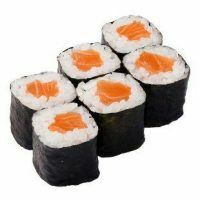
Regardless of whether you know how to cook delicious dishes or if you can hardly cope with cooking dumplings, you can always surprise your soulmate with a surprise in the form of the now extremely popular and very tasty Japanese dish - rolls.
- Accessories
- Ingredients
- How to cook
Rolls, in fact, it's just cooking rice with a variety of additives wrapped in algae. There is nothing complicated in the process of making rolls.
Accessories
You can easily guess that when preparing rolls you will probably need a saucepan for cooking rice. And you will be right. Next, you need to get a good cutting board, and - almost the most important thing - an sharp sharpened knife. If the knife is dull, then the whole thing will turn to dust, because the rolls are elementary flattened under its onslaught. To prepare rolls rice outside is useful food polyethylene film.
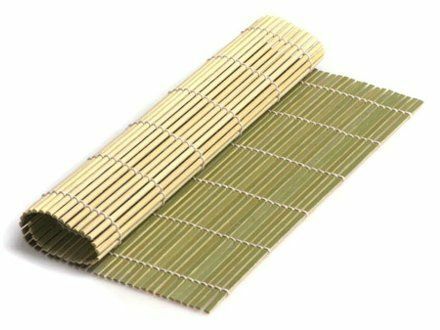
Of special tools you need to buy a small bamboo mat makisu, which, in fact, will help you to prepare a roll from everything that you are going to fit into it. And, of course, in the end, you need sticks to eat rolls and a bath for soy sauce. Plates can be ordinary, and can fully correspond to the entourage of the moment and be with Japanese drawings.
to contents ^Ingredients of
It is impossible to prepare rolls without rice. Rice is better to take a special, special grade, ensuring its better grip. It is sold in stores of the appropriate focus or "Japanese" corners of large supermarkets. This rice is sold either in packs smaller than usual, or in perforated perforated bags for easy cooking. Some, however, use usual round-grained rice for rolls. This is also not forbidden, it's just that the rolls are a little rougher because of its larger grains.
To rice you need vinegar, special rice vinegar Mitsukan, which will provide a decent bundle of rice in a single whole. This is necessary for your rolls to remain rolls in any situation( both in sticks and in soy sauce), otherwise your rolls will simply disintegrate when you try to eat them.
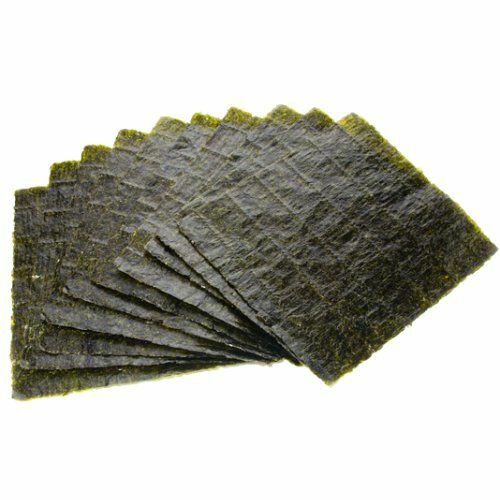
Do not forget about nori - dried leaf algae. They will help you turn the design into a roll shape and keep it in this form until the moment of eating.
Marinated ginger is now sold in any decent grocery store, so it will not be difficult to get it either. Initially, this product was used in the process of eating rolls to refresh the taste sensations between different species, but our compatriots eat it together with rolls.
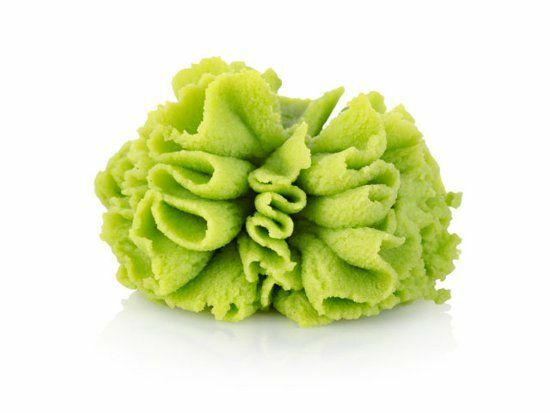
Wasabi, it is also a "green mustard" or "green horseradish" - an acute seasoning for sushi, which is exactly what it is supposed to eat with them. But we often add it directly to soy sauce.
You can not do without the filling. In fact, in the rolls you can put absolutely everything that your creative nature will want. Of course, there are certain classical ingredients that are accepted to put in rolls in Russia( though, as a rule, they have little in common with Japanese rolls).Here you can include salted or smoked fish - salmon, tuna or eel, cucumbers and avocado, cream cheese "Philadelphia", crabs, sometimes scrambled eggs and small fish eggs. However, with proper imagination and capabilities, you can vary this list at your own discretion. Some make rolls even from potatoes with herring or pickled cucumbers, which is not devoid of national color.
The rolls are both high-calorie and dietary( including vegetarian).You can cook them even sweet, if instead of the nori sheet you use the usual thin homemade pancakes, and inside put the stuffing out of the fruit. Just do not use this kind of sushi with soy sauce.
How to prepare
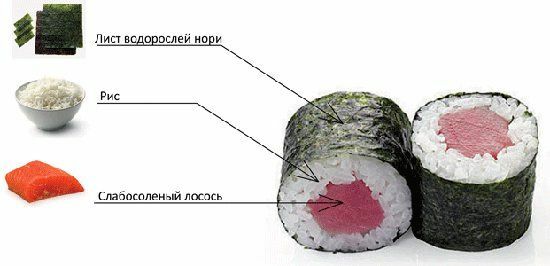
To prepare classic Norimaki rolls( that is, rolls with algae outwards), you need to lay out the mat in front of you, unfolding it from yourself. Put the nori sheet on the mat. It looks brittle and tough, but under the influence of wet rice it will quickly become elastic enough to fold.

On top of the nori, lay the cooked and slightly flavored mithucan rice with vinegar. Just leave a small free longitudinal strip along the bottom edge of the seaweed to secure the roll after folding. On the opposite end of this strip lay out your stuffing, for example, cucumber slices, fish slices and some "Philadelphia" cheese. Then start folding the future roll into the tube, starting from the edge with the filling. In this you will help the mat, which you can lift the edge, thereby wrapping the structure. Make sure that the roll turns smooth and dense enough that it does not crumble when you cut it. When you have prepared this sausage, cover the edge with the remaining free strip so that the rice does not spill out. Your roll is ready, it remains only to cut it with a very sharp knife into portions of the size you need.
If you decide to prepare the rolls "inside out" or uramaki, the principle of action is somewhat different: a food foil is placed on the mat of the makis, rice is laid on it, and on the rice is the filling you need. Then the scheme is the same: roll the roll with a flexible mat and deft hands, then cut into portions.
Whatever kind of rolls you decide to make, remember: you will be able to cope with the preparation of this is not very exotic, but still a delicious dish.
